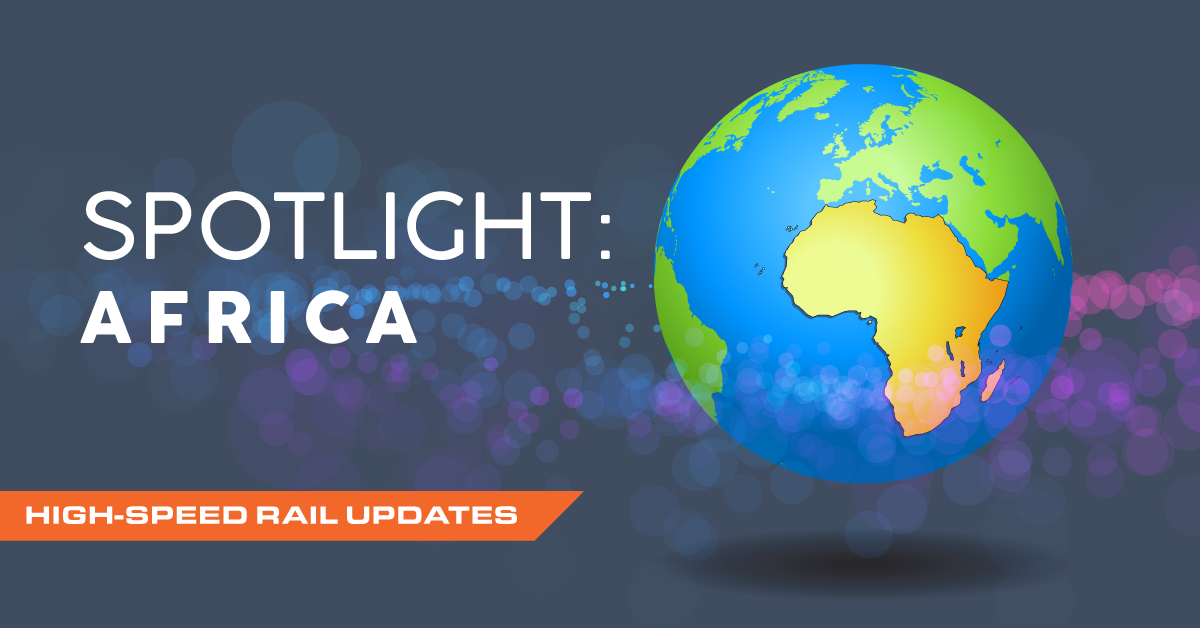While the United States has yet to see true high-speed rail (HSR), the rest of the world continues to make impressive strides. In March 2023, the International Union of Railways (UIC) held the World Congress on High-Speed Rail in Marrakesh, Morocco. The massive conference takes place every one to two years and aims to facilitate international cooperation among major players in the rail industry.
Northeast Maglev was fortunate enough to attend this year’s conference, and this one was particularly unique because it was UIC’s first time hosting the event in Africa. The location highlighted the recent HSR projects stretching across the continent, and specifically in Morocco, further proving the potential of efficient rail transit.
Morocco has been an impressive HSR pioneer in the region, with plans to eventually connect 43 cities within the country and ultimately cover over 1,300km (808mi) by rail. Their national railway operator, Office National des Chemins de Fer (ONCF), has already completed the first phase of this initiative. Inaugurated in 2018, this phase, called the Al Boraq, is a 323km-long (201mi) HSR service between Casablanca and Tangier. Named after a heavenly creature that is said to have transported Islamic prophets, the Al Boraq has already boasted great success, with over 2.4 million passengers on board in 2021, and 1.3 million the previous year.
The electrified high-speed line reaches speeds of up to 320km/h (199mph), and significantly reduces travel time between the two major economic hubs, with the trip time dropping from nearly five hours to just over two. The Al Boraq also represents the possibility for more widespread modal shifts within the continent, signaling the opportunity of transitioning more carbon-intensive alternatives (like road and air transport) into the more environmentally friendly rail sector. The next phase in Morocco’s HSR initiative, called the Maghreb Line, is currently still undergoing planning and will extend to Marrakesh.
But Morocco is not the only African country with HSR initiatives. Roughly a decade ago, the African Union (AU) announced a mega-project called The African Integrated High-Speed Railway Network (AIHSRN) as part of Agenda 2063. AIHSRN’s goal is to build a continent-wide HSR network, connecting 16 landlocked countries in Africa to major seaports and neighboring countries. The network will better facilitate the movement and accessibility of goods, services, and trade across the continent, which will ultimately improve the region’s economic growth.
But with AIHSRN’s original goal of many lines to be completed by 2033, the mega-project is running behind. With the magnitude of the project, worldwide delays and shortages due to the pandemic, and the scope of international partnerships required, the AIHSRN has certainly had its obstacles. But it’s no pipe dream, as demonstrated by the lines between Ethiopia and Djibouti, or like the aforementioned Al Boraq. HSR is making its way across the continent, one line at a time.
UIC emphasizes that “there is no limit the extension of the high-speed network and to the extension of railways in middle-income countries,” and hosting the event in Morocco demonstrated just that. Ian Rainey, Northeast Maglev’s senior vice president, affirmed that UIC was an empowering hub to exchange views and perspectives with industry experts, and was a space to share passion for HSR on an international level. It served as a great opportunity to share scopes of both current and future projects all over the world. Ian took part in the New Systems Showcase, where he discussed Northeast Maglev’s initiative to bring the world’s fastest train, the SCMAGLEV, to the U.S. Northeast Corridor. Check out Global Railway Review’s Q&A with Ian here.
While the U.S. may not be the most advanced in rail development, UIC served as great inspiration to continue to make strides in the sector. High-speed rail, international cooperation, and new infrastructure are not just possibilities – they’re critical components in our nation’s path forward. These aspects hold the key to sustainable growth for economies, the environment, and worldwide connectivity, and Northeast Maglev looks forward to being a part of these promises.

One response to “The Status of High-Speed Rail: Africa”